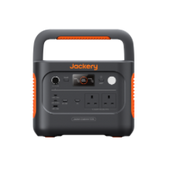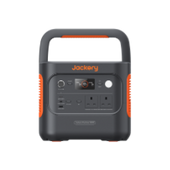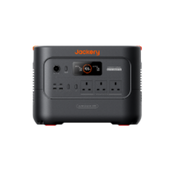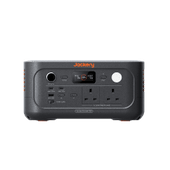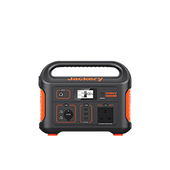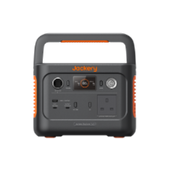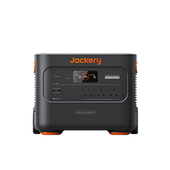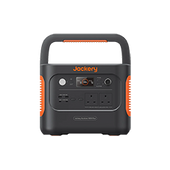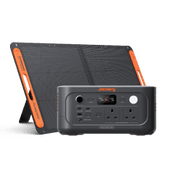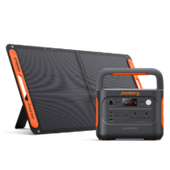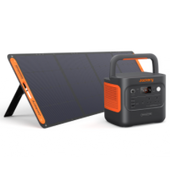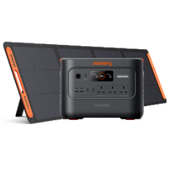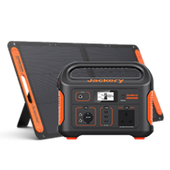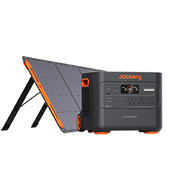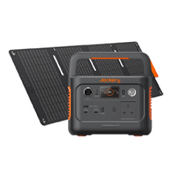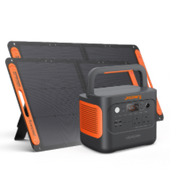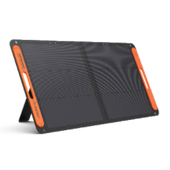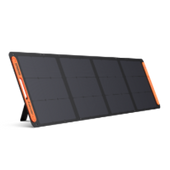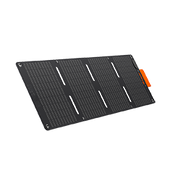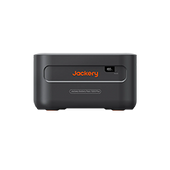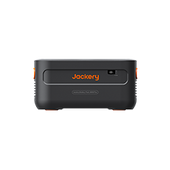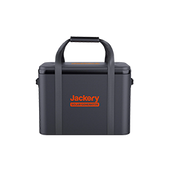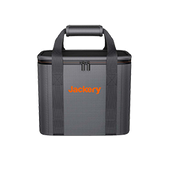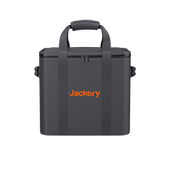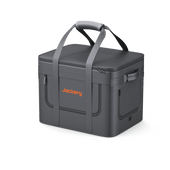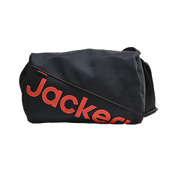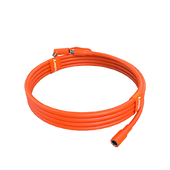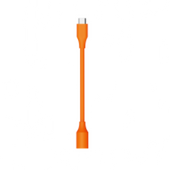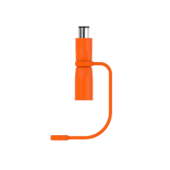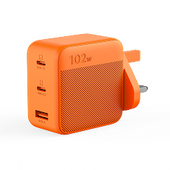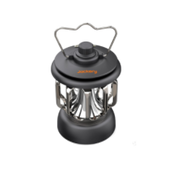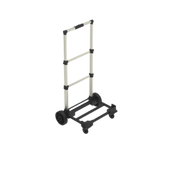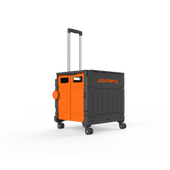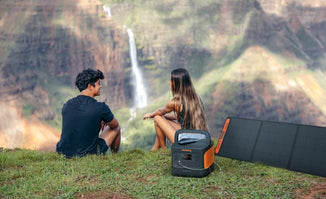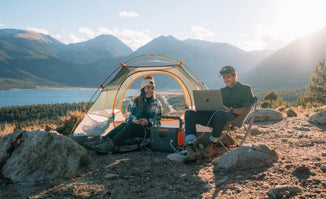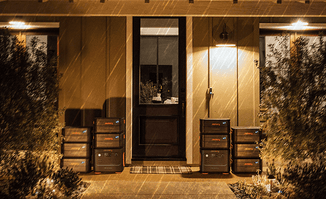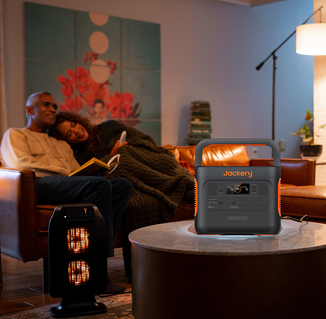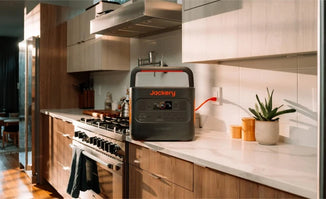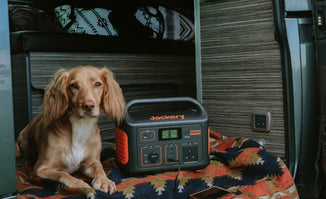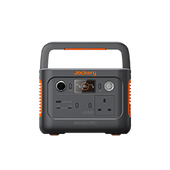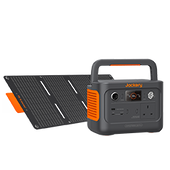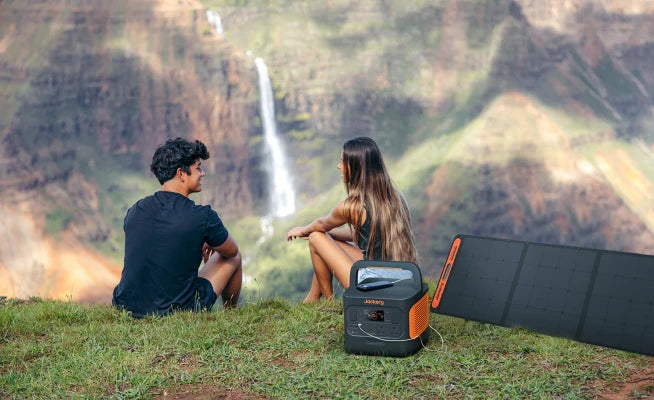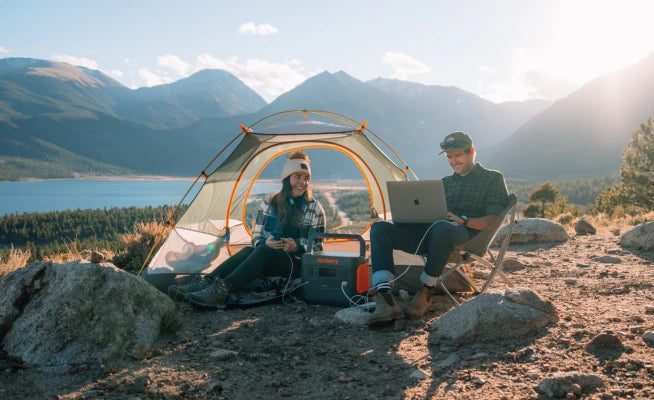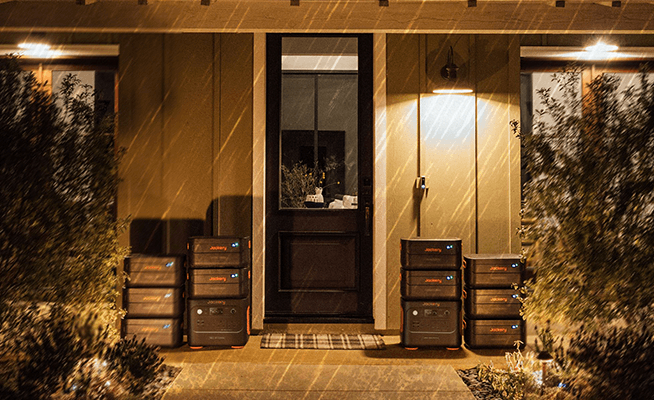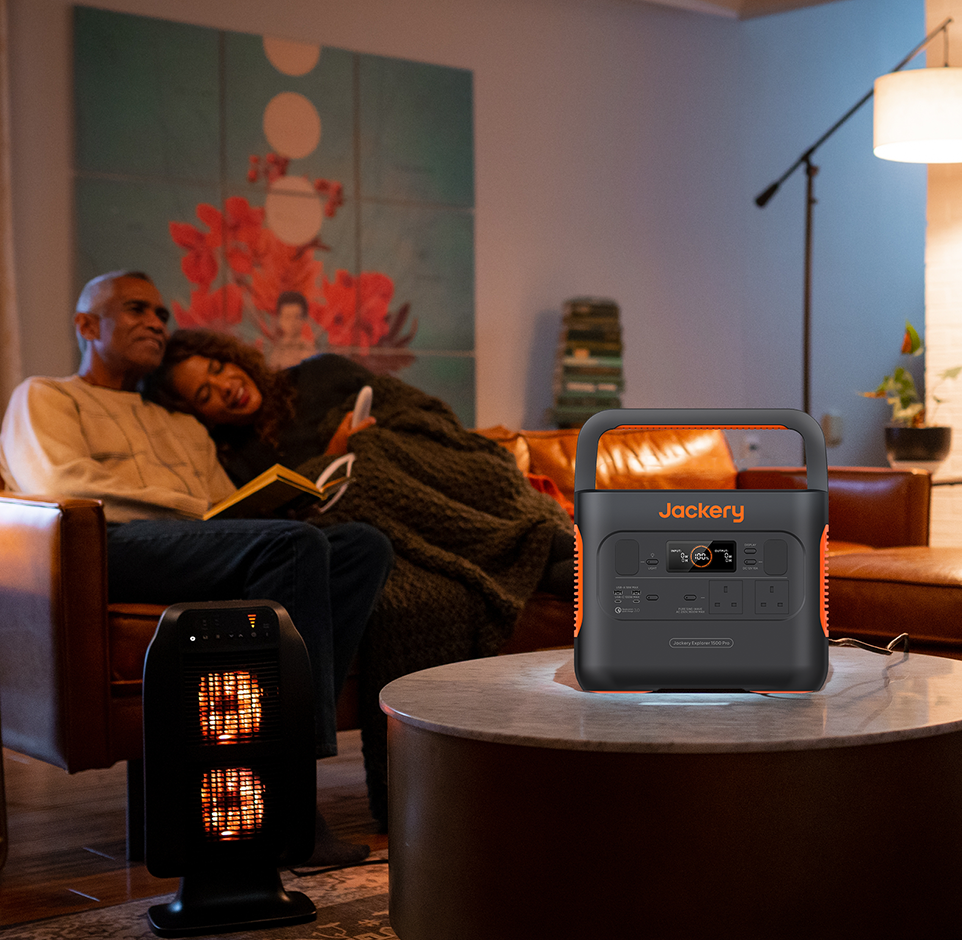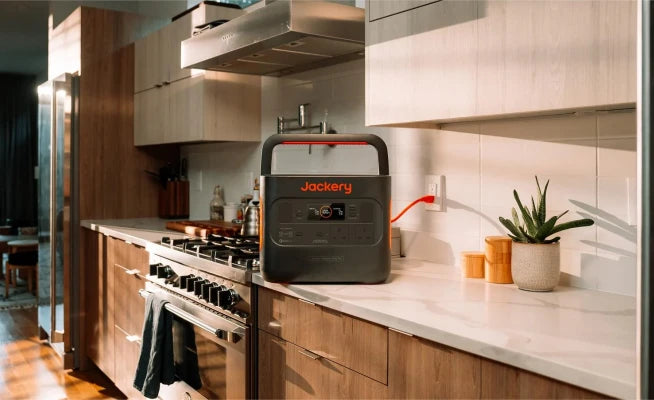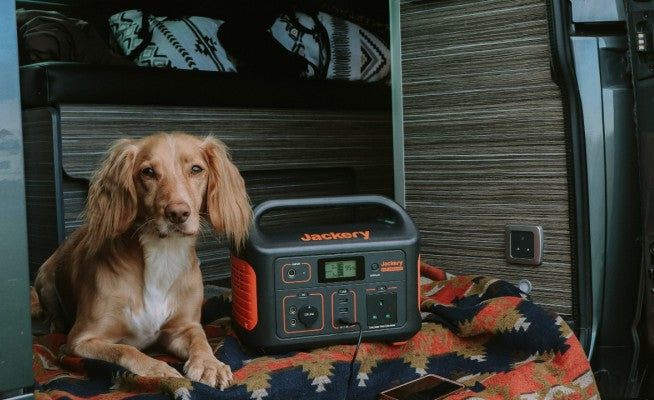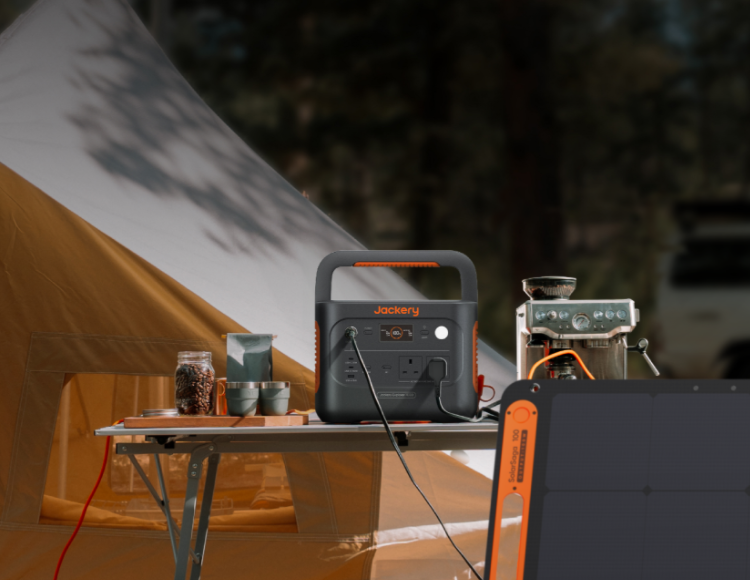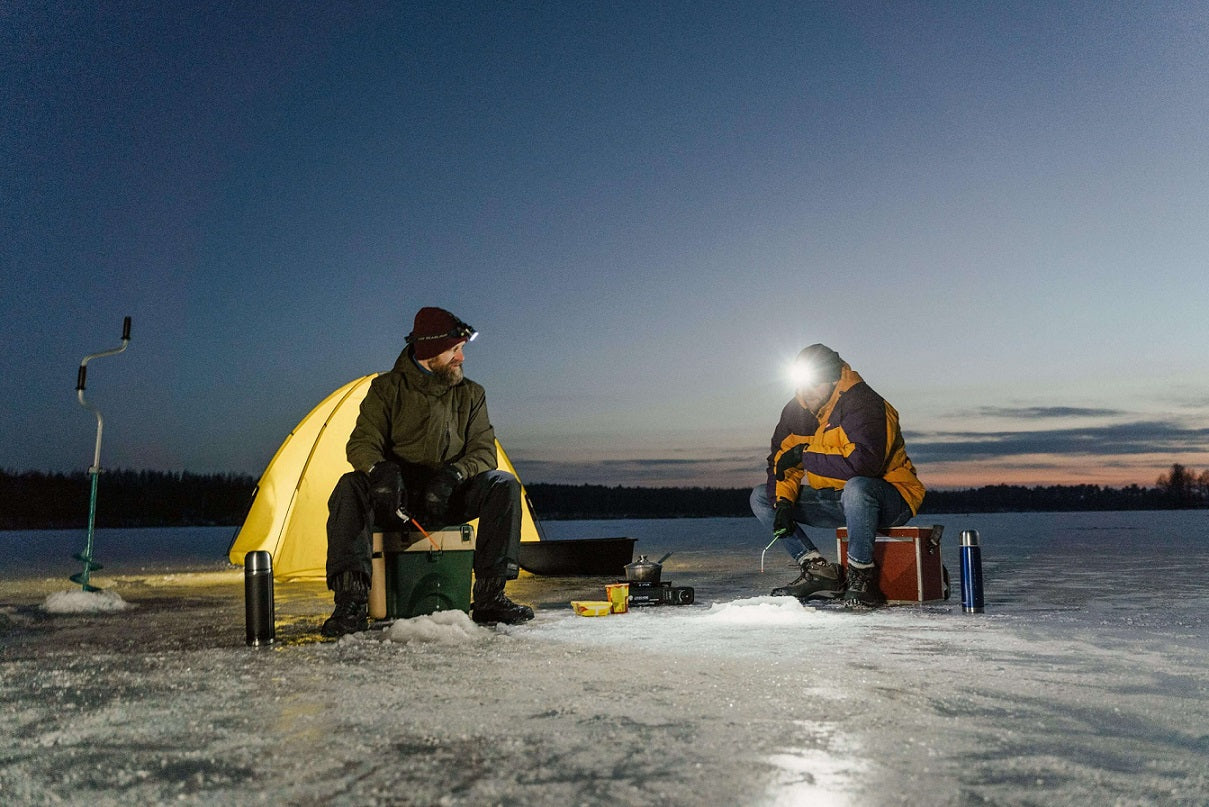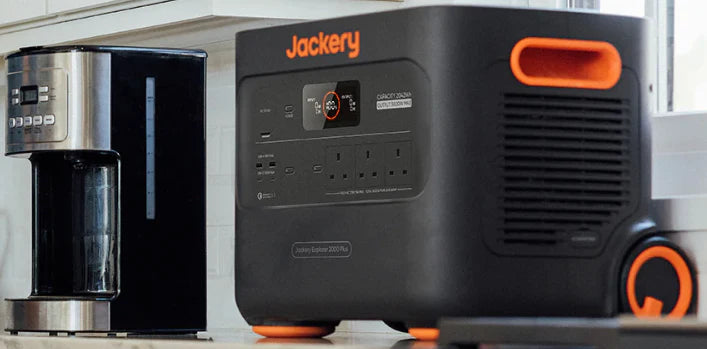|
Key Takeaways: |
|
- Outdoor camping often requires a long period of independent living, and a large-capacity kettle can ensure the introductory amount of water - There are portable folding kettles, large-capacity insulated kettles, environmentally friendly materials, and smart kettles. - A typical camping kettle in the UK consumes approximately 750 watts of electricity. - Powering electrical equipment in the wild is often challenging, and many outdoor appliance charging options exist. - We recommend Jackery Explorer 2000 Plus or 1000 Plus portable power station to charge your essentials effectively. |
Importance of Camping Kettles
Camping, an outdoor activity close to nature, has become increasingly popular in recent years. Carrying the right gear is crucial while enjoying the beauty and fun of the great outdoors. A camping kettle is an indispensable basic configuration. So, why must you have a unique camping water bottle when camping?
Enhance camping convenience and portability.
Outdoor camping often requires a long period of independent living, and a large-capacity kettle can ensure the introductory amount of water needed for the day and reduce the trouble of frequent water fetching. At the same time, modern camping kettles focus on portability in design, and some are even equipped with adjustable handles or straps for easy carrying and hanging, making them very suitable for outdoor use.
Provide safety for camping.
In an outdoor environment, safety is always the number one priority. Carrying a reliable camping kettle will ensure you have hot water when needed. For example, on a cold night, a pot of hot water can keep you warm and be used for emergency medical treatment, such as cleaning wounds or applying hot compresses. In addition, some high-tech camping kettles are equipped with intelligent temperature control systems that can accurately adjust the water temperature to prevent accidents such as burns.
Improve your camping experience.
A beautifully designed and functional camping kettle can meet basic needs and add fun and beauty to camping. Whether boiling water for tea or enjoying a hot cup of coffee under the stars, a camping kettle brings a unique sense of ritual.
Types of Camping Kettles
Kettles are essential to camping and can add convenience to outdoor life. Here are several different types of camping kettles to meet various outdoor needs.
Portable Folding Kettle
The most prominent feature of portable folding kettles is the foldable design, which is compact and easy to store and carry. This kettle type usually has a small capacity of about 0.6 litres to 1 litre, suitable for personal or small family use.
Large-Capacity Insulated Kettle
Large-capacity insulated kettles are a good choice for campers who must be outdoors for a long time. Stainless steel's excellent insulation effect can keep the water temperature high for a long time and is convenient anytime. In addition, it is durable and easy to clean. Large-capacity insulated kettles usually have handles and straps for easy carrying and transportation.
Multifunctional Kettle
The multifunctional kettle not only has the function of boiling water but also integrates multiple functions, such as making tea, milk, and coffee. In addition, the multifunctional electric kettle is usually stylishly designed, compact, and portable, and it is a good helper in improving the quality of camping life.
Environmentally Friendly Material Kettle
More and more campers favour environmentally friendly material kettles. Its durability and functionality are not inferior to traditional electric kettles, and it is the first choice for environmentally friendly camping enthusiasts.
Smart Kettle
Bright kettles have gradually entered the camping field with the development of smart homes. They can be remotely controlled through mobile phone apps for scheduled heating and real-time water temperature monitoring.
|
Camping Kettle Types |
Advantages |
Disadvantages |
|
Portable Folding Kettle |
Good portability High safety |
Small capacity Silicone material problem Insulation problem |
|
Large-Capacity Thermal Kettle |
Large-capacity Good thermal insulation effect Anti-scalding design Easy to clean |
Large volume Heavyweight |
|
Multi-Function Kettle |
Various functions High aesthetics Intelligent |
High price Difficult to repair Complex operation |
|
Environmentally-Friendly Kettle |
Safe and healthy Not easy to produce a scale Easy to clean |
High price Heavyweight High risk of fragility |
|
Smart Kettle |
Intelligent operation Precise temperature control Data recording Energy saving |
Expensive Depends on power supply and network Complex operation |
In short, different types of camping kettles have different characteristics. Whether you pursue lightness, heat preservation, multi-function, or environmental protection, you can find a suitable camping kettle to make every camping experience perfect.
How Much Electricity Does A Camping Kettle Use?
A typical camping kettle in the UK consumes approximately 750 watts of electricity, markedly less than a regular residential kettle, which can use between 2 and 3 kilowatts; this reduced power consumption is essential to prevent overloading campsite electrical systems.
Household kettles are among the most energy-intensive appliances in the kitchen, comparatively speaking. Some can reach 3000 watts and 13 amps. Typically, a kitchen kettle operates at approximately 2200 watts. Camping kettles require far less power, often around 750 watts.
Connecting to a campsite electric hook-up point enables you to get a power supply similar to that in a residential setting. This will be a nominal 230V, single-phase, 50Hz supply, compatible with UK and contemporary European motorhomes, caravans, folding campers, trailer tents, and tent hook-up connections.
This electrical source can directly power 230V appliances or indirectly through a power supply that converts 230V AC mains power to a nominal 12V DC, typically in conjunction with a leisure battery.
How to Power a Camping Kettle Outdoors?
In recent years, camping has become one of the favourite outdoor activities for many British people. However, powering electrical equipment in the wild is often challenging. Especially when you need to heat food or drink water, how to power a camping kettle becomes a key issue. Here are some practical ways to power a camping kettle outdoors in the UK to help you enjoy a more comfortable and convenient camping experience.

1. Camping Site Power Supply
Most camping sites may offer a 16A electrical supply; however, some are restricted to 10A. Certified sites and other campgrounds may offer an even more restricted supply, potentially offering as little as 5A. In contrast, a contemporary residential kitchen generally possesses a power supply of 20A, a distinct electric cooker, and a lighting supply.
Therefore, when camping, it is essential to adhere to the campsite's supply limits and mitigate the risk of supply loss due to a tripped circuit breaker by being judicious regarding the appliances utilised and the quantity employed simultaneously.
Verifying that the cumulative rated wattage of equipment operating simultaneously does not exceed the power supplied to you is essential.
Power (W) = Voltage (V) x Current (in A)
Therefore, for a 10A connection, 230V x 10A is 2300W, indicating that 2,300W (2.3kW) of power may be sent to your unit. At a 16A location, this increases to 3.68kW. Exercise caution when utilising standard household kettles that may draw 10A or more independently.
2. Gas Stove
Gas stoves are a traditional and efficient heating method suitable for small cookers such as camping kettles. They use liquefied petroleum gas (LPG) or butane as fuel and heat quickly and effectively.
However, gas stoves require fuel tanks to be carried, which increases their weight and creates safety hazards. In addition, they require careful handling to avoid fire or gas leakage.
Recommendations for the use of gas stoves
• Install the gas tank and ignite the gas stove according to the instructions.
• Make sure to check whether the fuel tank and connecting pipes are intact before use.
• Use it in a well-ventilated place and avoid using it in a tent.
3. Biomass Fuel Stove
Biomass fuel stoves use natural materials such as firewood, dead branches and leaves as fuel, which is an environmentally friendly and economical heating method. They are usually light and easy to carry, suitable for outdoor camping.
However, the heating efficiency of biomass stoves is greatly affected by the type and quality of fuel, and they produce smoke when used, which may affect the camping experience. In addition, it is necessary to comply with local regulations when collecting fuel to avoid damaging the environment.
Recommendations for the use of biomass fuel stoves
• Choose biomass stoves with reasonable design and high combustion efficiency.
• Look for biomass fuels such as dead branches and leaves outdoors, and be careful not to damage vegetation.
• When using, it should be carried out in an open area to avoid causing fire.
4. Portable Generators
Portable generators can provide power for various electrical devices, including camping kettles. They usually use gasoline or propane as fuel and have a wide range of power, and different specifications of generators can be selected according to needs.
However, it is relatively heavy and inconvenient to carry and makes noise when running, which may affect the tranquil atmosphere of camping. In addition, extra fuel needs to be taken, which increases the weight and safety risks.
Recommendations for the use of portable generators
• Choose low-noise and place the generator away from tents and other camping facilities.
• Make sure to use it in a well-ventilated area to avoid carbon monoxide poisoning.
• Fuel should be stored in a dedicated container away from fire.
5. Solar Power Generator
Solar equipment (solar generators/panels) can power outdoor and indoor electrical appliances such as camping kettles with sufficient sunlight. Generally, solar generators are light, easy to carry, and do not take up much space.
However, the weather dramatically affects solar panel charging efficiency, and the charging effect is not good on cloudy days or at night. The Jackery Portable Power Station is a portable generator that can combine with Jackery Solar Panels as the solar generator to charge appliances with solar energy. Also, it can be recharged by wall outlets and carports when there is no sufficient sunlight, especially in the UK.

Jackery Portable Power Stations are characterised by their lightweight design and portability—they are 30% lighter than comparable products on the market. They feature a foldable handle for convenient transport, allowing users to charge devices while on the go. These durable portable electric generators can power 99% of appliances, including camping kettles.
Recommendations for using solar power
• Try to choose an efficient solar device.
• Please place the solar device in a sunny place to ensure that it can fully absorb sunlight.
• Connect and use according to the device manual.
6. Wind Power Generator
Wind power generation is suitable for areas with abundant wind resources. In some coastal and high-altitude regions of the UK, it can power small electrical appliances such as camping kettles.
However, the installation and maintenance of wind power generation equipment is relatively complicated and is greatly affected by the weather. In addition, the noise of wind turbines may also affect the camping experience.
Recommendations for using wind power
• Try to choose a small and lightweight wind turbine.
• Make sure it is installed in a stable place.
• The local wind resources should be considered.
There are many ways to power a camping kettle outdoors in the UK. Each method has its advantages, disadvantages, and scope of application. Choosing the correct power supply method can make camping more comfortable and convenient, depending on your needs and conditions. At the same time, no matter which power supply method is used, you must pay attention to safe operation to avoid accidents.
Jackery Portable Power Stations for Camping Kettles
Portable power stations are advantageous for camping kettles as they supply electricity without a power infrastructure. They can power various gadgets, including kettles, phones, cameras, etc.
A Jackery Portable Power Station is a small, battery-powered gadget that lets you get power on the go. It has AC, DC, and USB ports to run most home and outdoor appliances and smartphones. It's quieter than gas engines, doesn't emit pollution, and can be charged by solar panels, wall outlets, or car chargers.

These portable battery chargers, equipped with ChargeShield technology, safeguard gadgets against voltage fluctuations. They are engineered for outdoor resilience and feature a 94V-0 fire rating and superior shock resistance.
Jackery Explorer 1000 Plus
The Explorer 1000 Plus features an impressive 1264Wh durable LiFePO4 battery and a 2000W full-power pure sine wave inverter, supplying sufficient energy for almost all essential devices. Remarkably, it can augment its capacity to 5kWh by incorporating up to three more battery packs.
Employing Jackery's exclusive technology, the Explorer 1000 Plus's capacity can be augmented from 1.26kWh to 5kWh by adding up to three supplementary battery packs. Furthermore, it features a maximum output of 2000W, exceeding the standard 1kWh LFP power plants by 20%. It can charge a camping kettle (750W) for 1.3 hours.
The MPPT technique guarantees 99% efficiency in solar charging. A wall charge from 0% to 100% of the battery requires 100 minutes, while solar charging with four SolarSaga 200W solar panels takes 2 hours. With automobile charging capabilities, you will no longer need to worry about depleting power while outdoors.
The LiFePO4 battery system is secure and durable, equipped with a proprietary BMS (Battery Management System) that includes integrated protections. After 4,000 charge cycles, the battery retains 70% capacity, guaranteeing a lifespan of 10 years with daily charging. This yields an exceptional cycle life that is eight times longer than that of competitors.

The following are the working hours of using Jackery Explorer 1000 Plus (1.26-5 kWh) to charge the camping kettle and more appliances:
|
Wattage (W) |
Current (A) |
Working Hours |
|
Camping Kettle (750W) |
3.3A |
1.3-5.7H |
|
Domestic Kettle (2000W) |
8.7A |
0.5-2.1H |
|
Iron (1300W) |
5.6A |
1.1-3.3H |
|
Water Heater (850W) |
3.7A |
2.9-5H |
|
Refrigerator (135W) |
0.6A |
5.7-31.5H |
Jackery Explorer 2000 Plus
Jackery Explorer 2000 Plus is more powerful and versatile than 1000 Plus. It is a solid portable power solution that delivers outstanding performance for outdoor activities and home backup, especially for camping. With its impressive capacity and powerful output, this device can support the operation of camping kettles for even weeks.
The Jackery Explorer 2000 Plus enables the addition of extra battery packs, increasing the capacity from 2 kWh to an impressive 12 kWh, thereby significantly satisfying your power needs. This solar product has a remarkable output of 3000W, which can charge almost all essential appliances indoors or outdoors. If you only use one Explorer 2000 Plus battery pack, it can charge a 750W camping kettle for 2.2 hours.
The Explorer 2000 Plus stands out as a groundbreaking add-on battery pack that offers the convenience of recharging through solar panels, wall outlets or carports. This feature increases versatility, boosts charging efficiency, and shortens charging time.
ChargeShield is Jackery's advanced fast charge technology, featuring 62 protective mechanisms, 12 protective algorithms, and four types of physical safety protection. This technology uses a unique stepped variable-speed charging algorithm to enhance safety and extend battery pack lifespan by 50%.

The following are the working hours of using Jackery Explorer 2000 Plus (2-12 kWh) to charge camping appliances:
|
Wattage (W) |
Current (A) |
Working Hours |
|
Camping Kettle (750W) |
3.3A |
2.2-13.6H |
|
Domestic Kettle (2000W) |
8.7A |
0.8-5.1H |
|
Iron (1300W) |
5.6A |
1.3-7.8H |
|
Water Heater (850W) |
3.7A |
1.9-12H |
|
Refrigerator (135W) |
0.6A |
12.1-75.6H |
Camping Kettle Buying Guide
Choosing the proper camping kettle is key to ensuring a comfortable camping experience. Here are a few factors to consider when selecting a camping kettle.

Capacity
Generally, a single camper can choose a camping kettle with a capacity between 600 ml and 1 litre, which is convenient to carry and can meet basic needs. If you are camping with multiple people or need a lot of hot water, you should choose a camping kettle with a capacity of 1.5 litres to 2 litres to avoid frequent boiling water.
Material
The material of the camping kettle directly affects its durability, weight and heating efficiency. Common camping kettle materials include stainless steel, plastic, glass and titanium.
|
Materials |
Features |
Applicable Scenarios |
|
Stainless steel kettle |
Corrosion resistance Durable Good thermal insulation Easy to clean |
Home, office, long-term camping |
|
Aluminium kettle |
Excellent thermal conductivity Lightweight Affordable Fall-resistant |
Student dormitories, temporary residences, outdoor activities |
|
Titanium kettle |
Lightweight Durable Excellent corrosion resistance Healthy and safe |
Outdoor activities, long-distance travel, users with high water quality requirements |
|
Glass kettle |
Transparent and beautiful No odour and non-toxic Easy to clean Good thermal conductivity Easy to break |
Leisure and entertainment activities, home decoration |
|
Plastic kettle |
Low price Lightweight and portable Rich colors Easy to break Not resistant to high temperatures |
Temporary use, outdoor activities |
Heating Method
Camping kettles usually have two heating methods: electric and gas. Electric kettles are easy to use and suitable for camping scenes with a power supply. Gas kettles are ideal for outdoor environments without a power supply and can be heated using gas or wood stoves.
Portability and Durability
Small and light products should be selected for easy carrying and storage. In addition, easy-to-carry camping kettles should always have a handle or hanging ring that is easy to grasp, access, and carry.
Environmental Adaptability
Durability ensures the kettle's long-term use, especially in complex and changeable outdoor environments. Choosing a camping kettle with a dustproof and waterproof design can effectively prevent dust and rain from entering and extend its service life.
Safety
The camping kettle should have an automatic power-off function to prevent dry burning and water overflow after boiling. In addition, the handle design should be comfortable and scald-proof to avoid burns during operation. Gas kettles should pay attention to fireproof design to prevent flames from directly contacting the kettle body and causing damage.
Temperature Control and Versatility
Some advanced camping electric kettles have a temperature control function, which can heat water to a specific temperature according to needs, such as making tea and coffee. It is convenient for campers with special needs. In addition, some kettles also have a heat preservation function, which can keep the water temperature at a high temperature for a long time and is convenient for use at any time.
In summary, when choosing a camping electric kettle, you must consider capacity, heating method, material, safety and portability factors. Only by selecting a kettle that suits your needs and scenarios can you ensure a smooth and comfortable camping experience.
Tips for Using & Maintaining a Camping Kettle
The humble kettle is vital in outdoor camping. However, correct use and maintenance skills are essential to keeping the camping kettle in good condition.
Tips for Using Camping Kettles
Here are some tips for using camping kettles:
In outdoor environments, you should choose a stable ground or countertop to place the camping kettle and consider whether flammable items are around.
Before use, ensure that the amount of water in the camping kettle is moderate, neither lower than the lower limit water level line nor higher than the upper limit water level line.
Do not use camping kettles to boil liquids with acid, alkali, or salt components to avoid corrosion of the kettle body and heater.
To prevent water from freezing in harsh environments such as high altitudes or polar regions, you should choose a camping kettle with good thermal insulation.
Tips for Maintaining Camping Kettles
Here are some tips for preserving camping kettles:
After using the camping kettle for some time, the scale accumulates inside, affecting its heating efficiency and service life.
When not in use, store the camping kettle in a dry and ventilated place to avoid moisture. Wipe the kettle body regularly with a slightly damp towel or rag to keep it clean.
Even with regular cleaning and maintenance, the camping kettle may still have difficulty removing dirt or signs of aging after being used for a long time. When you find dirt inside the kettle that is challenging to remove or signs of aging, you should replace it with a new kettle in time.
Camping Kettles FAQs
The following are the frequently asked questions about the camping kettles in the UK:
1. Can I use a regular kettle when camping?
Generally, you can use a regular kettle when camping. But there are several reasons why you should consider a special camping kettle.
First, camping kettles are usually more durable, lighter, and easier to pack and transport than regular kettles. Additionally, camping kettles often have features designed for outdoor use, such as heat-resistant handles and lids.
2. What kind of camping kettles can I use on a campfire?
Camping kettles made entirely of metal (usually titanium, stainless steel, or aluminium) can be used over an open flame. If you use a campfire to heat a camping kettle, remember the following points.
First, make sure the camping kettle is made of a material that can withstand high temperatures, such as stainless steel or cast iron. Avoid camping kettles made of plastic or other materials that may melt or deform when exposed to heat.
Second, choose a camping kettle with a flat bottom to ensure it sits securely on the campfire.
Finally, always use a long-handled utensil or gloves to hold the kettle securely when it is hot.
3. What metal makes a good camping kettle?
Aluminium is often chosen for camping water bottles because it is lightweight and strong, making them easy to carry.
Another option is to use stainless steel for the entire water bottle. This water bottle is the heaviest, but it can withstand knocks and falls better than other metals.
Titanium is an excellent alternative to aluminium. It is very light and strong, but it is more expensive. If you want to go camping with only a backpack and want to bring a water bottle, titanium may be your best choice.
So, if your budget allows, choose a camping water bottle made of titanium.
Final Thoughts
Whether backpacking, overlanding, or car camping, camping kettles enhance the experience and ensure outdoor safety. Whether pursuing an efficient and convenient camping life or enjoying exquisite outdoor time, a suitable camping kettle can bring you unexpected convenience and fun.



